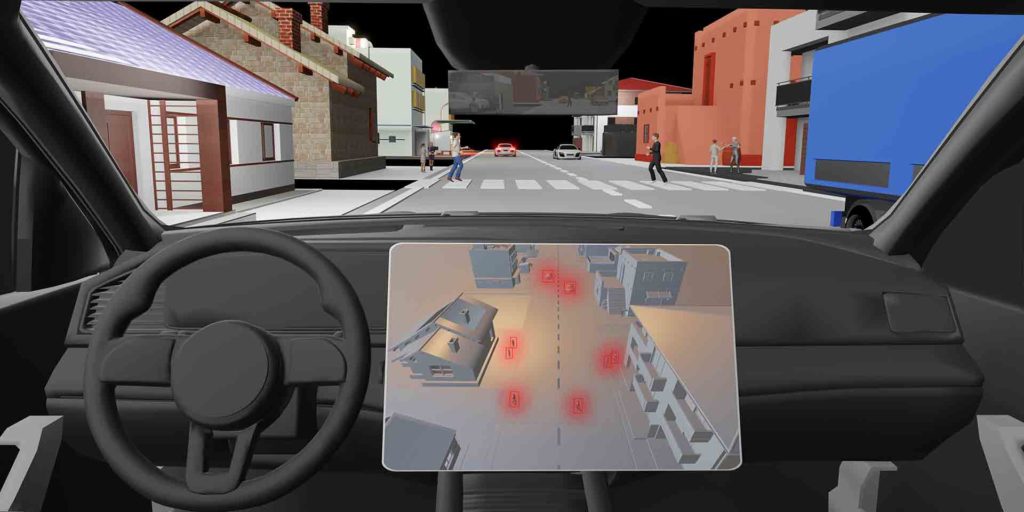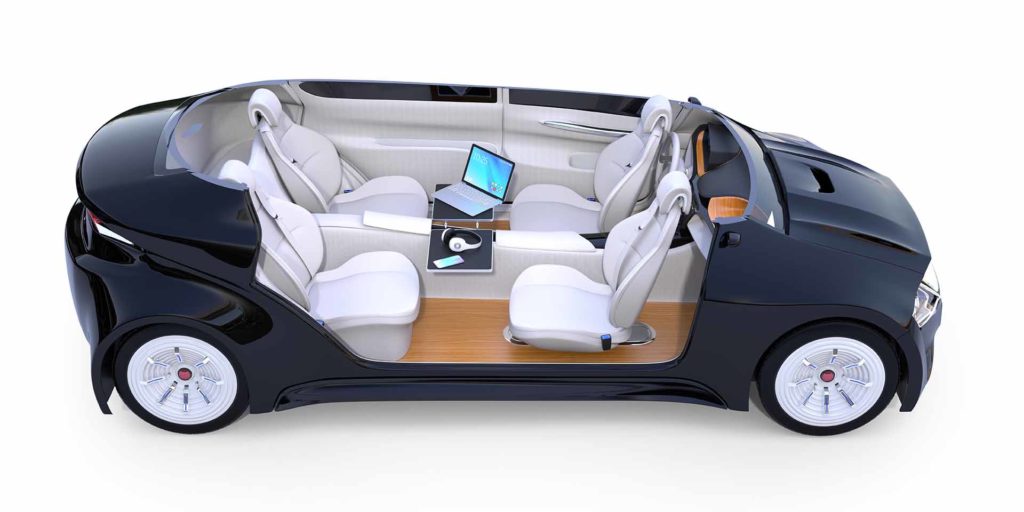WHEN WILL SELF-DRIVING CARS BE AVAILABLE?
Automotive industry experts have a catchphrase that goes, “We’re always five years away from self-driving cars.” Yet, despite all technological advancements, only a few autonomous car test projects are currently running.
That said, the technologies for fully self-driving cars continue to mature. Indeed, cars that drive themselves are operating on the streets of a city near you today, albeit with a human driver inside, ready and available to take over for safety. As the technical difficulties are significant, some believe that it will be a long and winding road to get to full autonomy. However, while this is true, the challenges are well-known, and the reality is that these are being overcome as we speak.
Advanced Driver Assistance Systems (ADAS) vs. self-driving
While self-driving vehicles are not yet a reality, many new vehicles on the road today contain ADAS features that are helpful. Driving assistance technologies include adaptive cruise control. Adaptive cruise control keeps you a safe distance from other vehicles, automatic emergency braking, which prevents collisions faster than a human can react, blind-spot detection, and warns you when a speed camera is nearby. It can also provide lane departure warnings, which prevent drifting. But, ADAS requires that the driver is always alert and observant and has their hands over the wheel ready to take over.

Some automakers claim that they already have complete self-driving capabilities. However, these are limited to what is considered Level 2 autonomy (there are six levels – from zero, meaning no automation, to Level 5, which is complete automation).
Level 2 means that the driver still needs to be very much involved in driving. The leap to Level 3, where it’s completely hands-off unless the system “requests intervention”, is substantial. For reasons of legal liability and to avoid potential litigation issues, many of the manufacturers don’t currently feel comfortable claiming full autonomy. When it does roll out, Level 3 will be a feature that can only be enabled at low speeds, such as acting as a chauffeur in a traffic jam.
This uncertainty means that in the short-term, car OEMs (manufacturers) are likely to follow the robotaxi approach to garner public acceptance of the underlying technologies. That’s by running vehicles at slower speeds on known geo-fenced routes.
Of course, this may mean that it’s easier to get lorries driving in convoy on motorways and other highways on the basis that they can “platoon” and keep in contact with other vehicles ahead of them on the road. Particularly if they’re driving known, well-travelled routes between depots.
These known circumstances lessen risk by making it more predictable, with fewer chances of variations or cases occurring that would be unknown to the vehicle. Humans are very good at learning from their previous experience to adapt to changing situations – but that takes years of practice in the real world. However, training neural networks so that they aren’t surprised by different eventualities and potential road incidents is much more difficult.
Humans are very good at learning from their previous experience to adapt to changing circumstances.
Neural networks need to be trained only on good driving practices. Training an autonomous driving model based on humans whose driving is less than ideal (for example, braking late and skipping red lights) will result in this behaviour being copied by the self-driving algorithm.
Car manufacturers will need to ensure they only learn from excellent drivers and follow ISO 26262 functional safety.
Take a look around you – and adapt
A self-driving car with multiple cameras and a 360-degree view around the vehicle can allow the autonomous vehicle to adapt to road users such as cyclists. It can see into the “human blind spots,” to give itself more room to navigate safely around the cyclist, whereas a human driver may not even have seen them. Safety then is of paramount importance on the road to production-ready autonomous vehicles.
Although the technologies exist today there are some concerns about unusual circumstances that the vehicle may not previously have encountered. An example of an unusual circumstance that stumped early autonomous driving was in San Francisco, where mist or fog, and also steam rising from street vents, would confuse the algorithms, forcing the car to stop.
However, the capabilities of artificial intelligence are continuing to improve. Thanks to extensive training in simulations and the thousands of hours of real-life driving experience that partially autonomous cars are gaining on the road. These sensor-enabled cars are absorbing vast amounts of data to continually train algorithms, thus enabling them to become more adaptable to these events.
What is the current legal situation (as of 2022)?
No self-driving cars are currently allowed on UK roads, but the government has now said the first such vehicles could be on UK roads by 2025. Some cars, coaches and lorries with self-driving features could even be operating on motorways in the next year, the Department for Transport said.
UK roads could see self-driving vehicles rolled out by 2025 thanks to new government plans. Backed by £100 million, this scheme will prioritise safety through new laws and create thousands of new jobs in the industry.

The Benefits of Self-Driving Cars
Driverless vehicles will benefit society in a variety of ways. When they become routine, they will:
- Save lives. Over 36,000 individuals died in car accidents in the United States alone in 2019. Autonomous vehicles won’t be at risk of becoming drunk or nodding off and will be able to react to road conditions more quickly than a person. The EU aims to reach zero road deaths by 2050. To do that it has to boost safety features in cars, as human error is estimated to be at fault in 95 percent of vehicular accidents.
- Reduce traffic. Driverless vehicles will communicate with each other and with roadside infrastructure as a result of “smart city” technologies, such as 5G. This will help to organise traffic and reduce traffic bottlenecks.
- Lessen reliance on people to transport freight. Platooning lorries, which refers to travelling in a convoy at high speed, will maximise road utilisation by minimising traffic, enhancing safety, and boosting the effectiveness of product distribution.
Driving towards the future
Driverless cars may rule the road in the future. The progress in this direction is already underway and will present us with incredible opportunities in the coming years.
The movement toward autonomous vehicles is currently taking place all over the world, despite the many issues that still need to be resolved. For many years, there have been several automobiles with good autopilot systems (Level 2 and 3).
It’s amazing how quickly autonomous driving technology is evolving. Many opportunities for autonomous vehicles may arise for us in this decade as a result of the ongoing advancement of technologies, including those utilising artificial intelligence.
It will take some time for fully autonomous vehicles (Level 5) to be deployed everywhere. The technology needed for driverless cars is more than impressive, but there are still a lot of issues to be resolved.
According to experts, the number of vehicles on the road equipped with “Citypilot” will increase around 2030. This means that they are autonomous vehicles that can travel some highways and some city streets, or parts of a city, entirely on their own. Getting to the point where driverless technology is ready for you to order a driverless car via your smartphone and it drives you to your destination autonomously (level 5) won’t likely become a reality until 2040 or later.
So while it’s not possible to put an exact date on the tech for fully autonomous cars being ready, the date for autonomous cars becoming a reality remains closer than ever.
Related Articles
Production-Ready Autonomous Vehicles
What Are The Six Levels Of Autonomous Driving Technology?
What Is ISO 26262 And Functional Safety
Related Posts
The long and winding road to autonomous cars
Making surround-view for cars smarter and safer
Why electric cars matter for the IP electronics industry
Related News
Imagination Technologies and BAIC Capital announce automotive joint venture
